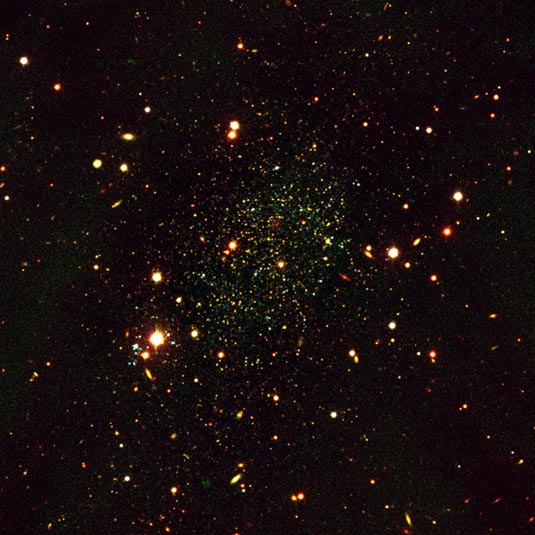
Galaxy
RA 10hr 4m 4.01s Dec -27° 20' 2.53"
Antlia
4 million light years
ESO
February 27, 1999
Related Image: G1209
ABOUT THIS IMAGE:
In addition to large spiral galaxies like the Milky Way Galaxy, the Andromeda Galaxy and Messier 33, the Local Group of Galaxies contains many dwarf galaxies. Antlia is a low-surface brightness, spheroidal dwarf galaxy that was only discovered in 1997. While it contains a large amount of atomic hydrogen at its center, no young stars are found, and it appears that most of its stars are old. This is unlike other dwarf galaxies in the Milky Way neighborhood, as star formation is expected to occur within dense hydrogen clouds. Further observations will be necessary to understand this unusual characteristic.
This
is a true-color image of the dwarf galaxy Antlia combined from three exposures
with the FORS1 multi-mode instrument at VLT UT1, in the B (blue), V (green)
and R (red) optical bands. Many background galaxies are seen in the field.
The total exposure times were 2400 sec, 2400 sec and 5400 sec, respectively.
The seeing varied between 0.5 and 0.7 arcsec. The field measures about
7 x 7 arcmin 2. North is up and East is left. Very high quality images
of Antlia were obtained in different colors by FORS1 on VLT UT1 in the
period January 27-31, 1999. These data were taken around full moon, so
they do not show as faint stars as they would under normal FORS operating
conditions, but the image quality is exceptional. They represent by far
the best images ever obtained of this galaxy, and they include the first
deep B-band images.